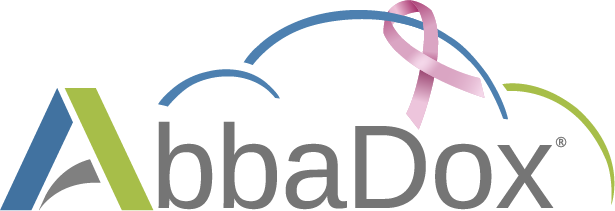In today's fast-paced healthcare environment, it is essential to have a reliable and efficient Radiology Information System (RIS) in place. RIS is a crucial component that facilitates the management of radiology operations, including patient scheduling, image storage, and reporting. However, without proper monitoring and maintenance, the smooth operation of the RIS can be disrupted, leading to delays and inefficiencies in patient care delivery.
Understanding the Importance of Proactive Monitoring in RIS
Proactive monitoring plays a vital role in ensuring the optimal performance of the Radiology Information System (RIS). It involves continuously observing the system, collecting data, and identifying potential issues before they escalate into critical problems. By adopting a proactive approach, healthcare organizations can maximize uptime, mitigate risks, and minimize the impact of disruptions on patient care.
Proactive monitoring goes beyond simply reacting to problems as they arise. It involves actively monitoring the RIS infrastructure, software, and network components in real-time. This allows healthcare IT teams to identify performance bottlenecks, security vulnerabilities, and capacity constraints before they adversely affect system functionality.
Defining Proactive Monitoring
Proactive monitoring is a comprehensive strategy that involves utilizing various tools and techniques to monitor the RIS system. These tools can include network monitoring software, performance monitoring tools, and security scanners. By utilizing these tools, healthcare organizations can gain valuable insights into the health and performance of their RIS.
One of the key aspects of proactive monitoring is setting up performance thresholds and alerts. This allows healthcare IT teams to receive notifications when certain metrics exceed predefined thresholds. For example, if the response time of the RIS exceeds a certain threshold, an alert can be triggered, notifying the IT team of a potential issue. This enables rapid response and timely resolution, minimizing the impact on patient care.
The Role of Proactive Monitoring in RIS
Beyond detecting issues, proactive monitoring plays a crucial role in maintaining the integrity of the RIS database. By continuously monitoring the database, healthcare organizations can identify and address any potential data corruption issues before they become widespread. This ensures that critical patient information remains accessible and secure.
In addition to database integrity, proactive monitoring also helps healthcare organizations optimize the performance of their RIS. By identifying performance bottlenecks and capacity constraints, IT teams can take proactive measures to optimize the system's performance. This can include upgrading hardware, optimizing software configurations, or implementing load balancing techniques.
Furthermore, proactive monitoring is essential for ensuring the security of the RIS. By continuously monitoring the system for security vulnerabilities, healthcare organizations can identify and address any potential threats before they are exploited. This helps protect patient data from unauthorized access and ensures compliance with privacy regulations.
In conclusion, proactive monitoring is a critical component of maintaining the optimal performance, integrity, and security of the RIS. By continuously monitoring the system, healthcare organizations can identify and address potential issues before they escalate, minimizing the impact on patient care. With the increasing reliance on technology in healthcare, proactive monitoring is becoming an essential practice for healthcare organizations to ensure the smooth operation of their RIS.
Key Components of Proactive Maintenance for RIS
Proactive maintenance is another crucial aspect of keeping the RIS operational and efficient. It involves conducting regular maintenance tasks to prevent system errors, ensure optimal performance, and extend the lifespan of hardware and software components.
When it comes to proactive maintenance for RIS, there are several key components that healthcare organizations need to consider. These components not only help in identifying potential issues but also play a significant role in enhancing the overall performance of the RIS.
Identifying Essential Maintenance Tasks
Regular updates, patches, and system optimization are essential maintenance tasks for RIS. By keeping the system up to date with the latest software versions and security patches, healthcare organizations can protect against cyber threats and vulnerabilities.
When it comes to updates, it is crucial to ensure that the RIS software is compatible with the latest industry standards and regulations. This compatibility ensures that the system can effectively handle the increasing volume of patient data and meet the evolving needs of healthcare providers.
In addition to updates, regular system optimization is also necessary. This process involves fine-tuning the RIS to maximize its performance and efficiency. By optimizing system resources, healthcare organizations can reduce response times, decrease downtime, and improve user experience, thereby enhancing the delivery of radiology services.
The Impact of Regular Maintenance on RIS Performance
Regular maintenance not only helps to identify and rectify potential issues but also enhances the overall performance of the RIS. By optimizing system resources, healthcare organizations can reduce response times, decrease downtime, and improve user experience, thereby enhancing the delivery of radiology services.
Furthermore, regular maintenance tasks contribute to the longevity of hardware and software components. By conducting routine checks and inspections, healthcare organizations can identify any signs of wear and tear, allowing them to take proactive measures such as replacing faulty components or upgrading outdated software.
By extending the lifespan of hardware and software components, healthcare organizations can save costs in the long run. Instead of facing unexpected system failures and costly repairs, proactive maintenance ensures that the RIS remains reliable and efficient, ultimately leading to improved patient care and satisfaction.
Strategies for Implementing Proactive Monitoring and Maintenance
Implementing proactive monitoring and maintenance strategies is crucial to ensure the long-term reliability and optimal performance of the RIS. Healthcare organizations should focus on developing a routine monitoring schedule and prioritizing maintenance tasks for maximum efficiency.
Proactive monitoring and maintenance are key components of a successful healthcare IT infrastructure. By implementing these strategies, organizations can minimize downtime, improve system performance, and enhance patient care. Let's explore in more detail how healthcare organizations can develop a routine monitoring schedule and prioritize maintenance tasks.
Developing a Routine Monitoring Schedule
Establishing a routine monitoring schedule helps healthcare IT teams detect issues early, allowing them to take immediate action. A well-executed monitoring schedule should include regular checks for system performance, server health, and backup integrity.
When developing a monitoring schedule, it is important to consider the specific needs and requirements of the RIS. This may involve determining the optimal frequency of monitoring activities, such as daily, weekly, or monthly checks. Additionally, healthcare organizations should identify the key performance indicators (KPIs) that need to be monitored to ensure the smooth operation of the RIS.
For example, monitoring system performance metrics such as CPU usage, memory utilization, and network latency can provide valuable insights into the overall health of the RIS. By regularly reviewing these metrics, healthcare IT teams can identify potential bottlenecks or performance issues and take proactive measures to address them before they impact the system's functionality.
Prioritizing Maintenance Tasks for Maximum Efficiency
With numerous maintenance tasks to consider, it is essential to prioritize them based on criticality. By categorizing tasks as low, medium, or high priority, healthcare organizations can allocate appropriate resources and schedule maintenance in a way that minimizes disruption to daily operations.
When prioritizing maintenance tasks, healthcare organizations should consider factors such as the potential impact on patient care, regulatory compliance requirements, and the overall risk associated with each task. For example, tasks related to security updates and patches should typically be considered high priority to ensure the RIS remains protected against potential vulnerabilities.
Additionally, healthcare organizations should establish clear guidelines and procedures for handling maintenance tasks. This may involve creating a maintenance calendar that outlines specific dates and times for performing different tasks, as well as assigning responsibilities to designated team members. By having a well-defined maintenance plan in place, healthcare organizations can ensure that tasks are completed in a timely manner and that resources are utilized efficiently.
In conclusion, implementing proactive monitoring and maintenance strategies is essential for maintaining the long-term reliability and optimal performance of the RIS. By developing a routine monitoring schedule and prioritizing maintenance tasks, healthcare organizations can minimize downtime, improve system performance, and ultimately enhance patient care.
Challenges in Proactive Monitoring and Maintenance of RIS
While proactive monitoring and maintenance are essential, there are several challenges that healthcare organizations must overcome to ensure the effectiveness of these strategies.
Common Obstacles in RIS Monitoring
One common challenge in RIS monitoring is the complexity of the system itself. RIS encompasses various interdependent components, including servers, databases, and network infrastructure. Monitoring all these components in real-time and analyzing the generated data can be overwhelming.
Overcoming Maintenance Challenges in RIS
To overcome maintenance challenges, healthcare organizations should invest in automated monitoring tools that provide comprehensive insights into the RIS environment. These tools simplify the monitoring and data analysis process, enabling effective decision-making and proactive issue resolution.
The Role of Technology in Proactive RIS Monitoring and Maintenance
Technology plays a pivotal role in streamlining proactive monitoring and maintenance of RIS. With advancements in monitoring and analytics tools, healthcare organizations can enhance their ability to detect, diagnose, and resolve RIS-related issues.
Utilizing Modern Tools for Effective Monitoring
Deploying advanced monitoring tools equipped with real-time dashboards, customizable alerts, and predictive analytics empowers healthcare IT teams to monitor the RIS ecosystem proactively. These tools enable early detection of anomalies, rapid response, and more informed decision-making.
How Technology Simplifies RIS Maintenance
Automated maintenance tools streamline the deployment of software updates and patches, reducing manual efforts and the risk of human error. Additionally, utilizing cloud-based solutions for RIS maintenance provides scalability, seamless updates, and enhanced disaster recovery capabilities.
In conclusion, proactive monitoring and maintenance are crucial for ensuring the smooth operation of the RIS. By implementing proactive strategies, prioritizing maintenance tasks, and leveraging technology, healthcare organizations can optimize the performance and reliability of their RIS systems, leading to enhanced patient care delivery and improved operational outcomes.






-1.jpg)
